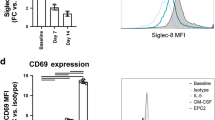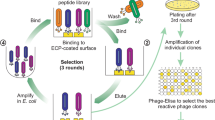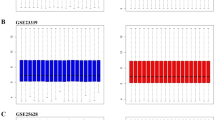Abstract
Background:
Eosinophils reside in normal gastrointestinal tracts and increase during disease states. Receptors for eosinophil-derived granule proteins (EDGPs) have not been identified, but highly cationic molecules, similar to eosinophil proteins, bind extracellular calcium–sensing receptors (CaSRs). We hypothesized that stimulation of CaSRs by eosinophil proteins activates epithelial cells.
Methods:
Caco2 intestinal epithelial cells, AML14.3D10 eosinophils, wild-type (WT) human embryonic kidney 293 (HEK293) cells not expressing CaSRs (HEK-WT), and CaSR-transfected HEK293 cells (HEK-CaSR) were stimulated with an eosinophil protein analog poly-L-arginine (PA) and phosphorylated extracellular signal–regulated kinase (pERK)1 and pERK2 were measured. Functional activation was measured with collagen lattice contraction assays.
Results:
Coculture of Caco2 cells with AML14.3D10 eosinophils augmented lattice contraction as compared with lattices containing Caco2 cells alone. PA stimulation of Caco2 lattices augmented contraction. HEK-CaSR stimulation with PA or Ca2+ resulted in greater pERK activation than that of stimulated HEK-WT cells. PA stimulated greater HEK-CaSR lattice contraction than unstimulated lattices. Contraction of PA-stimulated and PA-unstimulated HEK-WT lattices did not differ.
Conclusion:
Exposure of intestinal epithelia to the EDGP analog PA stimulates CaSR-dependent ERK phosphorylation and epithelial-mediated collagen lattice contraction. We speculate that EDGP release within the epithelial layers activates the CaSR receptor, leading to matrix contraction and tissue fibrosis.
Similar content being viewed by others
Log in or create a free account to read this content
Gain free access to this article, as well as selected content from this journal and more on nature.com
or
References
Furuta GT, Nieuwenhuis EE, Karhausen J, et al. Eosinophils alter colonic epithelial barrier function: role for major basic protein. Am J Physiol Gastrointest Liver Physiol 2005;289:G890–7.
Rothenberg ME, Hogan SP . The eosinophil. Annu Rev Immunol 2006;24:147–74.
Zagai U, Dadfar E, Lundahl J, Venge P, Sköld CM . Eosinophil cationic protein stimulates TGF-beta1 release by human lung fibroblasts in vitro. Inflammation 2007;30:153–60.
Turck CW, Dohlman JG, Goetzl EJ . Immunological mediators of wound healing and fibrosis. J Cell Physiol Suppl 1987:Suppl 5:89–93.
Ngo P, Ramalingam P, Phillips JA, Furuta GT . Collagen gel contraction assay. Methods Mol Biol 2006;341:103–9.
Brown EM, MacLeod RJ . Extracellular calcium sensing and extracellular calcium signaling. Physiol Rev 2001;81:239–97.
Justinich CJ, Mak N, Pacheco I, et al. The extracellular calcium-sensing receptor (CaSR) on human esophagus and evidence of expression of the CaSR on the esophageal epithelial cell line (HET-1A). Am J Physiol Gastrointest Liver Physiol 2008;294:G120–9.
Buchan AM, Squires PE, Ring M, Meloche RM . Mechanism of action of the calcium-sensing receptor in human antral gastrin cells. Gastroenterology 2001;120:1128–39.
Cheng I, Qureshi I, Chattopadhyay N, et al. Expression of an extracellular calcium-sensing receptor in rat stomach. Gastroenterology 1999;116:118–26.
Feng J, Petersen CD, Coy DH, et al. Calcium-sensing receptor is a physiologic multimodal chemosensor regulating gastric G-cell growth and gastrin secretion. Proc Natl Acad Sci USA 2010;107:17791–6.
Liou AP, Sei Y, Zhao X, et al. The extracellular calcium-sensing receptor is required for cholecystokinin secretion in response to L-phenylalanine in acutely isolated intestinal I cells. Am J Physiol Gastrointest Liver Physiol 2011;300:G538–46.
Geibel J, Sritharan K, Geibel R, et al. Calcium-sensing receptor abrogates secretagogue- induced increases in intestinal net fluid secretion by enhancing cyclic nucleotide destruction. Proc Natl Acad Sci USA 2006;103:9390–7.
Chen Y, Shi-Wen X, van Beek J, et al. Matrix contraction by dermal fibroblasts requires transforming growth factor-beta/activin-linked kinase 5, heparan sulfate-containing proteoglycans, and MEK/ERK: insights into pathological scarring in chronic fibrotic disease. Am J Pathol 2005;167:1699–711.
Chen Y, Leask A, Abraham DJ, et al. Heparan sulfate–dependent ERK activation contributes to the overexpression of fibrotic proteins and enhanced contraction by scleroderma fibroblasts. Arthritis Rheum 2008;58:577–85.
Hirano S, Rees RS, Gilmont RR . MAP kinase pathways involving hsp27 regulate fibroblast-mediated wound contraction. J Surg Res 2002;102:77–84.
Mulder DJ, Pacheco I, Hurlbut DJ, et al. FGF9-induced proliferative response to eosinophilic inflammation in oesophagitis. Gut 2009;58:166–73.
Hofer AM, Gerbino A, Caroppo R, Curci S . The extracellular calcium-sensing receptor and cell-cell signaling in epithelia. Cell Calcium 2004;35:297–306.
Woodruff SA, Masterson JC, Fillon S, Robinson ZD, Furuta GT . Role of eosinophils in inflammatory bowel and gastrointestinal diseases. J Pediatr Gastroenterol Nutr 2011;52:650–61.
Masterson JC, Furuta GT, Lee JJ . Update on clinical and immunological features of eosinophilic gastrointestinal diseases. Curr Opin Gastroenterol 2011;27:515–22.
Liu X, Umino T, Cano M, et al. Human bronchial epithelial cells can contract type I collagen gels. Am J Physiol 1998;274(1 Pt 1):L58–65.
Young JD, Peterson CG, Venge P, Cohn ZA . Mechanism of membrane damage mediated by human eosinophil cationic protein. Nature 1986;321:613–6.
Furuta GT, Ackerman SJ, Varga J, Spiess AM, Wang MY, Wershil BK . Eosinophil granule-derived major basic protein induces IL-8 expression in human intestinal myofibroblasts. Clin Exp Immunol 2000;122:35–40.
MacLeod RJ, Hayes M, Pacheco I . Wnt5a secretion stimulated by the extracellular calcium-sensing receptor inhibits defective Wnt signaling in colon cancer cells. Am J Physiol Gastrointest Liver Physiol 2007;293:G403–11.
Peiris D, Pacheco I, Spencer C, MacLeod RJ . The extracellular calcium-sensing receptor reciprocally regulates the secretion of BMP-2 and the BMP antagonist Noggin in colonic myofibroblasts. Am J Physiol Gastrointest Liver Physiol 2007;292:G753–66.
MacLeod RJ, Chattopadhyay N, Brown EM . PTHrP stimulated by the calcium-sensing receptor requires MAP kinase activation. Am J Physiol Endocrinol Metab 2003;284:E435–42.
Zhang Z, Qiu W, Quinn SJ, Conigrave AD, Brown EM, Bai M . Three adjacent serines in the extracellular domains of the CaR are required for L-amino acid-mediated potentiation of receptor function. J Biol Chem 2002;277:33727–35.
Zhang Z, Jiang Y, Quinn SJ, Krapcho K, Nemeth EF, Bai M . L-phenylalanine and NPS R-467 synergistically potentiate the function of the extracellular calcium-sensing receptor through distinct sites. J Biol Chem 2002;277:33736–41.
Hizaki K, Yamamoto H, Taniguchi H, et al. Epigenetic inactivation of calcium-sensing receptor in colorectal carcinogenesis. Mod Pathol 2011;24:876–84.
Furuta GT, Turner JR, Taylor CT, et al. Hypoxia-inducible factor 1-dependent induction of intestinal trefoil factor protects barrier function during hypoxia. J Exp Med 2001;193:1027–34.
Acknowledgements
The authors acknowledge the excellent technical assistance and expertise of Jonathan Phillips, Joanne Masterson, and Raina Ficherova and the generous advice and support of Sean P. Colgan. R.J.M. holds the Canada Research Chair in GI Cell Physiology.
Author information
Authors and Affiliations
Corresponding author
Supplementary information
Supplementary Figure S1
(TIFF 833 kb)
Rights and permissions
About this article
Cite this article
Ngo, P., MacLeod, R., Mukkada, V. et al. Epithelial calcium–sensing receptor activation by eosinophil granule protein analog stimulates collagen matrix contraction. Pediatr Res 73, 414–419 (2013). https://doi.org/10.1038/pr.2012.198
Received:
Accepted:
Published:
Issue date:
DOI: https://doi.org/10.1038/pr.2012.198



